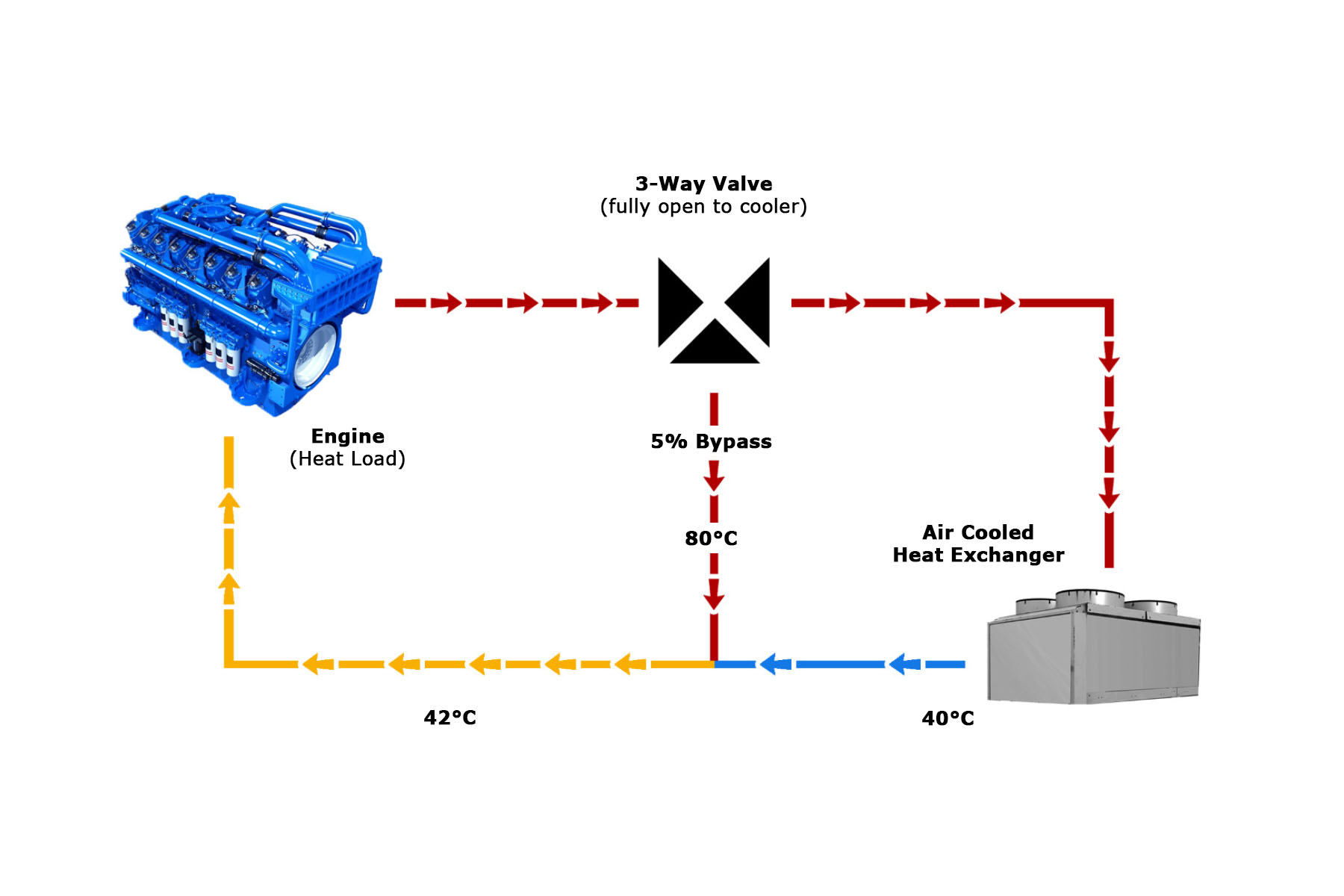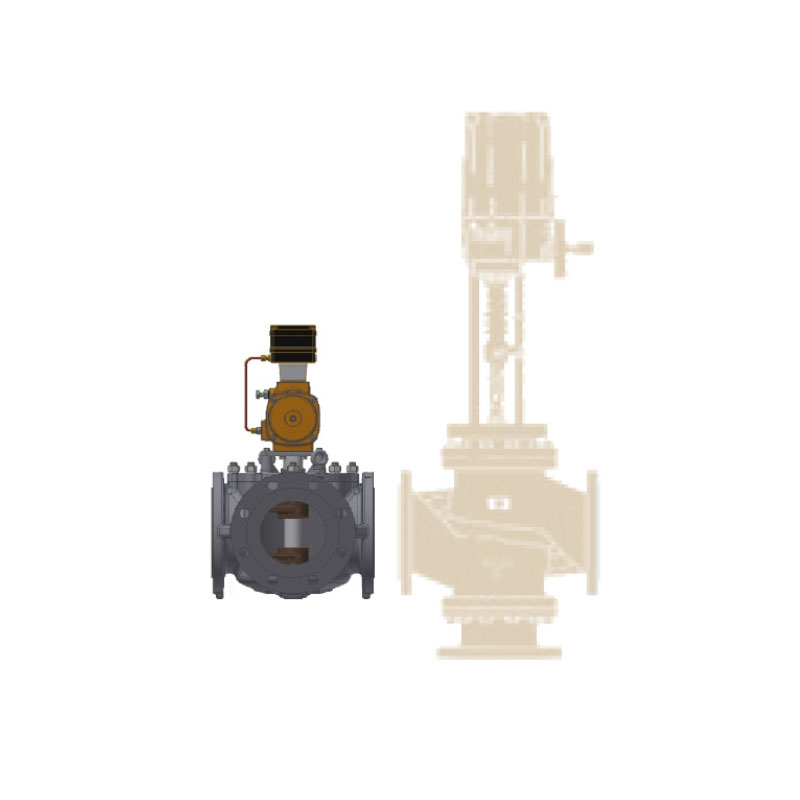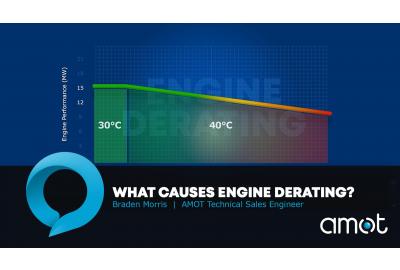With the rising cost of energy and increased environmental concerns, many companies across a wide range of industries have begun to focus on improving overall system efficiency. Whether in a factory, a power plant or onboard a ship, a 3-way control valve often is used to regulate engine fluid temperatures in heat recovery (CHP), district heating or HVAC systems.
The 3-way valve has a primary function to control the proportion of fluid flowing directly back to the heat load, versus through the cooler, in order to regulate temperature. A highly efficient valve will minimize the pressure drop due to flow but also have the capability to fully seal the ports, minimizing seat leakage.
Why is Control Valve Efficiency Important?
Pressure Drop: The lower the fluid pressure drop through potential restrictions such as valves, pipes, and instruments, the smaller the pump requirements. This translates to cost savings through lower potential energy consumption.
Physical Size: A more efficient valve can allow for a smaller physical size for a given flow rate. This can help with the development of more compact packaged solutions and reduce susceptibility to vibration.
Seat Leakage: Seat leakage defines the fluid flow through a ‘closed port’ and depending on the application, a low seat leakage may be critical to the overall efficiency of the system. In many applications ‘control valves’ are designed to operate in the central two-thirds of their travel to continuously regulate the temperature of the fluid. In other applications, ‘isolation valves’ are designed to fully seal a flow path and are either on or off.
How Can Seat Leakage Affect Engine Operation in a Power Generation Application?
In an engine-based power plant, the cooling system is often an air-cooled heat exchanger located outside. The 3-way control valve regulates the fluid temperature returning to the engine by directing some of the fluid to the heat exchanger (cooler) and some to the bypass.
In normal operating conditions a control valve is modulating to direct a proportion of the flow to both the cooler & bypass ports and seat leakage is not a consideration. Considering an engine operating at a fixed load, as the ambient air temperature begins to rise, the valve will need to direct a higher proportion of the fluid to the cooler as the cooling effect of the air is reduced. Eventually, if the ambient air temperature continues to rise, the heat exchanger will run out of cooling capacity and the water may begin to exceed ideal or even design limits. In such cases, it may be necessary to either operate outside the ideal temperature or de-rate the engine power to reduce the heat load.
You can see how this works in our animation below:
In the following illustration, the valve is fully open to the heat exchanger, calling for maximum cooling. Water coming from the engine is cooled from 80oC to 40oC by the heat exchanger. Remembering that a control valve is not necessarily designed to fully isolate a port, if the seat leakage still allows 5% of the fluid to flow to the bypass, the temperature going back to the engine would be 42oC instead of 40oC.

This loss of 2oC in cooling capacity has reduced the system efficiency and may be the difference between having to reduce the power output or force running outside of the intended temperature limits. Running at higher temperatures can lead to increased fuel consumption and emissions.
In summary, reducing seat leakage to a cooler offers several potential benefits including faster warm-up times, higher heat recovery and less waste heat, all of which lead to more efficient engine system performance and cost savings.
Choosing the Right Valve

The AMOT actuated G-Valve provides a highly-efficient valve solution for a variety of applications due to its unique properties:
- Compact: The rotary style 3-way G-Valve provides a very compact solution when compared with a linear globe valve technology. The rotary motion, as opposed to linear, allows for the actuator to be close coupled to the valve, reducing space requirements and increasing vibration resistance
- Low Pressure Drop: Capable of high flow rates for a maximum 0.3 bar pressure drop
- Low Seat Leakage: Available with ANSI II (0.5%) and ANSI IV (0.01%) leakage class
- Flexible:
- Select and configure any of the 3 physical ports to connect to Common, Cooler, and Bypass. Fit the valve to the pipework and not the other way
- Mount in any orientation, even upside down
- Choose from pneumatic, electric actuation; on-engine or off-engine capability
To find out more or to get technical application support, please contact our Customer Service team.











